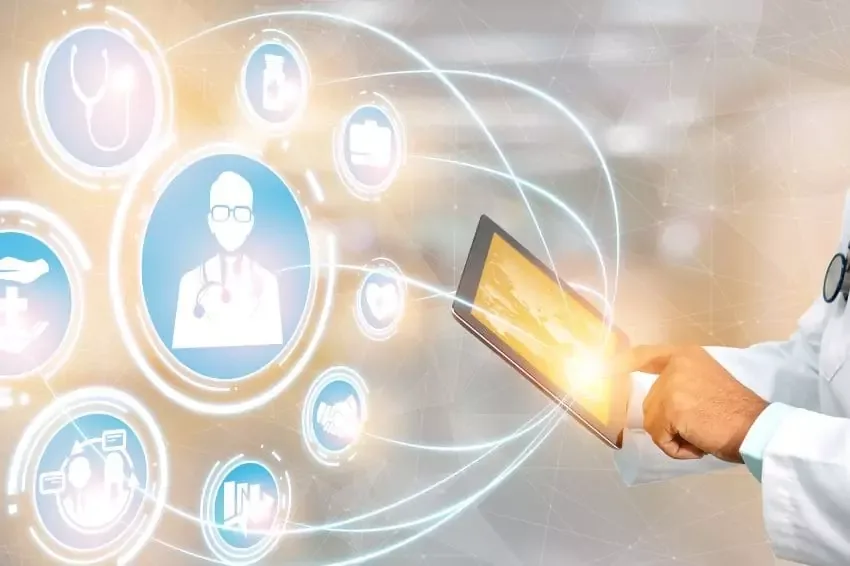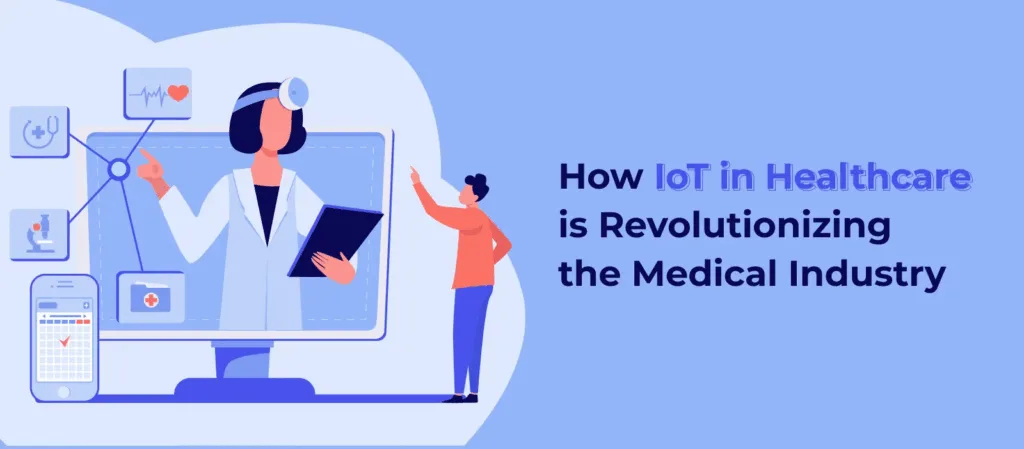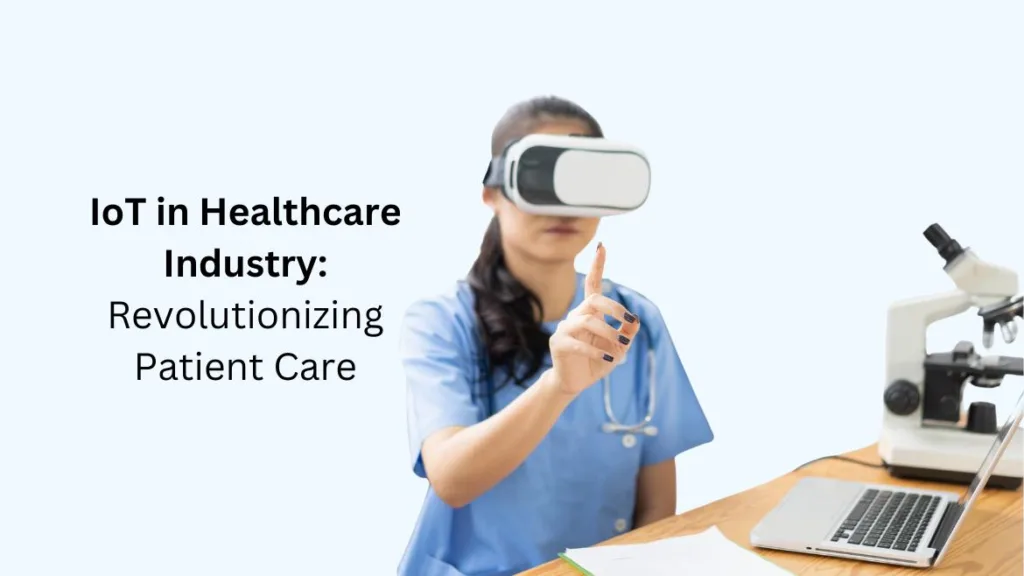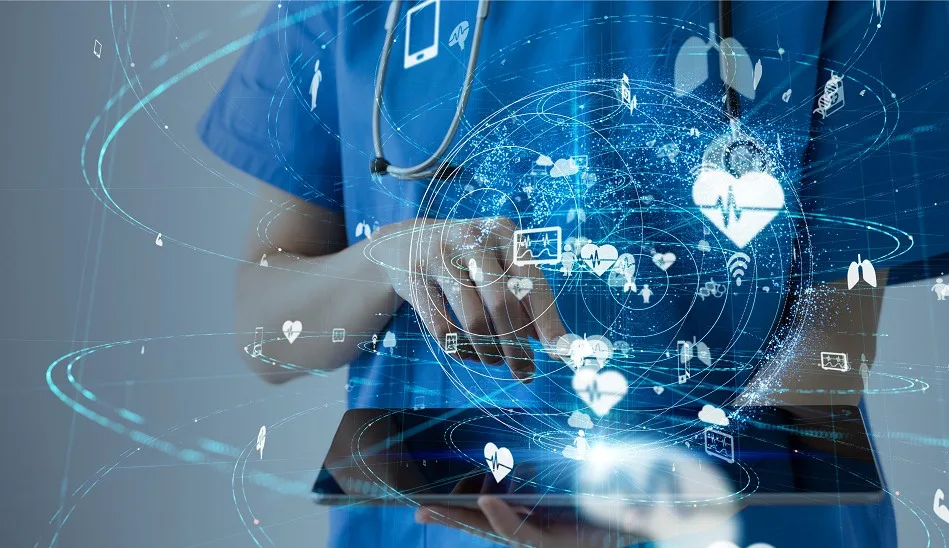
The Internet of Things (IoT) has expanded far beyond smart homes and connected vehicles—it’s now transforming the healthcare industry in powerful ways.
Hospitals are increasingly adopting IoT-driven healthcare solutions that go well beyond conventional methods, integrating smart devices to enhance patient care, monitor critical health conditions, and streamline daily operations.
From real-time health tracking to virtual consultations, IoT in healthcare has become essential—not just a luxury—for medical facilities aiming to improve outcomes, reduce costs, and stay competitive in a rapidly evolving landscape.
In this article, you’ll know more about how IoT is revolutionizing healthcare environments, learn what AI and IoT are, and witness the useful application of these technologies.
How IoT Enhances Hospital Ecosystems
IoT is redefining hospitals by transforming them into intelligent, interconnected environments that enable seamless data exchange between devices, patients, and medical staff. Nearly every piece of hospital equipment—from beds and endoscopes to heart monitors and MRI machines—is becoming “smart.”
This transformation allows hospitals to:
1. Remotely Monitor Patients:
Wearable devices such as glucose monitors and heart rate sensors continuously track a patient’s health and transmit real-time data to healthcare providers. This proactive monitoring helps reduce hospital readmissions and emergency room visits, as doctors can intervene early when data indicates a potential health issue.
2. Manage Medical Assets Efficiently:
IoT-enabled asset tracking systems—such as Mapsted’s solutions—integrated into hospital infrastructure make it easy to locate essential equipment, including infusion pumps and wheelchairs. This reduces search time, ensures timely use, and can be critical in urgent situations.
3. Streamline Hospital Operations:
Smart IoT systems go beyond patient monitoring. They can automate inventory tasks—like reordering medications when stock runs low, tracking usage, and sending reminders to staff. For instance, an automated inventory system can place orders once supplies fall below a certain threshold, ensuring uninterrupted care.
4. Improve Indoor Navigation:
Large hospital campuses can be difficult to navigate. IoT-powered indoor navigation systems use sensors and real-time location data to help patients, visitors, and staff find their way with ease. Smartphone apps guide users to appointments or specific rooms, cutting down on delays and enhancing the overall experience.
The Combined Power of AI and IoT in Healthcare
While IoT brings significant benefits on its own, combining it with artificial intelligence takes healthcare innovation to the next level. AI processes the massive amounts of data collected by IoT devices—like heart rate, oxygen levels, or blood pressure—and turns it into actionable insights for medical professionals.
Here’s how AI and IoT are transforming hospital care:
1. Predictive Analytics:
By analyzing trends in patient data, AI can forecast health issues before they escalate. For instance, it can detect early warning signs of a heart attack, enabling physicians to take preemptive action, potentially saving lives.
2. Enhanced Diagnostic Accuracy:
AI can process vast datasets to detect diseases at earlier stages. It can also interpret medical images—such as MRIs or CT scans—with remarkable precision, identifying abnormalities like tumors before they’re visible to the human eye, leading to faster and more accurate diagnoses.
3. Real-Time Clinical Decisions:
With AI analyzing live data from IoT devices, healthcare providers receive immediate alerts if a patient’s condition begins to deteriorate. This rapid feedback supports timely medical intervention and improved outcomes.
4. Remote Healthcare Access:
- AI and IoT also enable continuous remote monitoring, allowing patients to consult with doctors virtually. This is especially valuable for individuals with chronic conditions or those in remote areas with limited access to healthcare facilities.
Real-World Impact of IoT in Healthcare: The Numbers Don’t Lie
The influence of IoT on healthcare is backed by strong data. In 2022, hospitals made up 35% of the global IoT market share, demonstrating the sector’s rapid adoption. Regionally, North America dominated with 40.3% of global IoT revenue—a clear signal of growing confidence in connected healthcare.
Several key drivers are fueling this momentum:
- Cutting Costs: IoT solutions in healthcare automate time-consuming manual tasks and help reduce patient readmissions, directly lowering the cost of care delivery.
- Government Support: Worldwide, governments are increasingly investing in IoT-based healthcare initiatives, aiming to improve efficiency and outcomes. This investment trend is expected to grow substantially in the coming years.
- Reduced Readmissions: One of the most measurable benefits of IoT in hospitals is the decrease in readmission rates. For instance, remote monitoring for chronic conditions like heart disease has cut 30-day readmissions by up to 50%, easing the burden on hospitals and allowing focus on critical cases.
What’s Next for IoT in Healthcare?
The future of IoT in healthcare is incredibly bright, with evolving technologies opening up new possibilities. Here are some exciting developments on the horizon:
- AI-Powered Personalization: As IoT continues to gather detailed patient data, AI will use this data to deliver hyper-personalized treatments. This real-time analysis will help doctors provide more accurate care, faster recovery plans, and better outcomes.
- 5G Connectivity: The integration of 5G will supercharge IoT in hospitals by enabling faster and more stable communication between devices. This will transform capabilities like remote diagnosis and even telesurgery through ultra-fast data transmission.
- Predictive Maintenance: AI-driven IoT systems will take hospital operations a step further by predicting when equipment might fail, enabling proactive maintenance and reducing costly downtimes.
- Remote Robotic Surgeries: Although AI and IoT have already made an entry into robotic-assisted surgeries, future advancements will allow surgeons to perform procedures remotely with precision using real-time data from IoT-connected instruments.
How IoT is Revolutionizing Healthcare Infrastructure
Hospitals are complex ecosystems where people and equipment must operate seamlessly together. Yet, many facilities struggle with infrastructure inefficiencies. Here’s how IoT is solving that:
- Smarter Equipment Management: Hospitals rely on hundreds to thousands of devices, including wheelchairs, monitors, pumps, and more. With IoT, every asset can be tracked, located, and allocated in real time. Staff can immediately find critical equipment, especially in emergencies, improving response times and patient care.
- Environmental Automation: Operating rooms, labs, and storage areas often require strict climate control. IoT sensors can monitor and adjust environmental factors like temperature and humidity automatically to maintain sterility or medication safety.
- Energy Optimization: IoT isn’t just about patient care—it also helps hospitals reduce operational costs. Smart sensors can monitor power usage, shut down unused systems, and optimize resource consumption, driving both sustainability and cost efficiency.
Final Thoughts: IoT Is the Future of Healthcare
IoT in healthcare is more than a passing innovation—it’s shaping the future of hospitals. As AI and connected devices become increasingly integrated, the healthcare system will evolve to become more efficient, responsive, and centered on the patient experience.
Hospitals that embrace IoT now are setting themselves up for long-term success. They’ll reduce operational costs, improve diagnostics, and deliver superior patient outcomes. The path forward is clear: smart hospitals powered by IoT are no longer optional—they’re essential.



